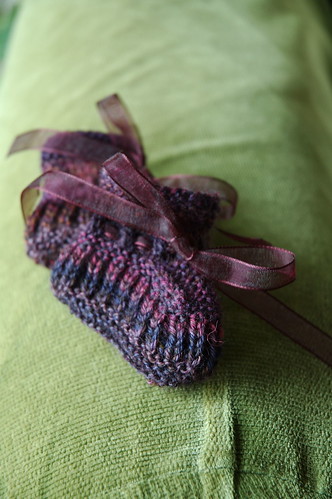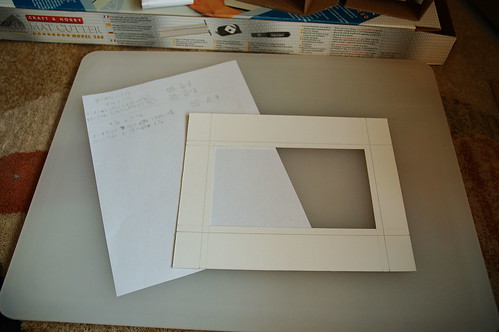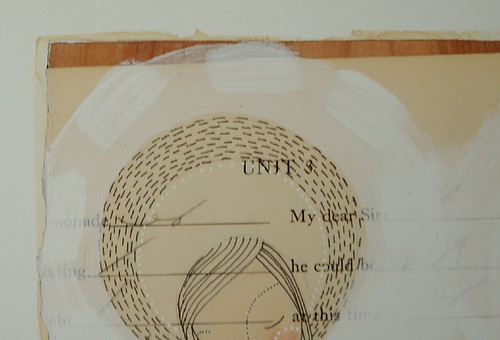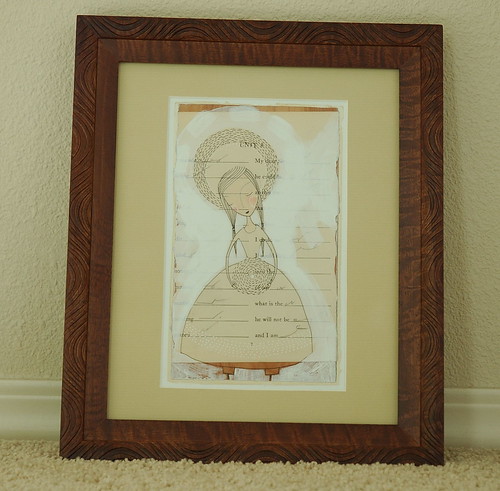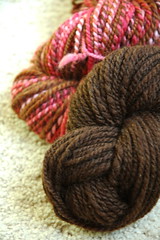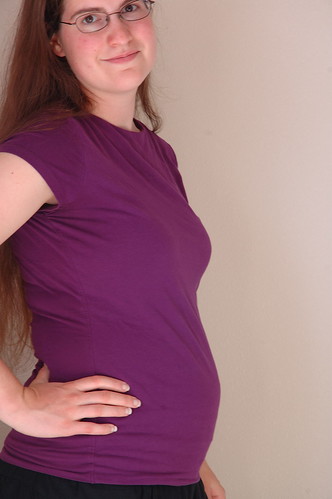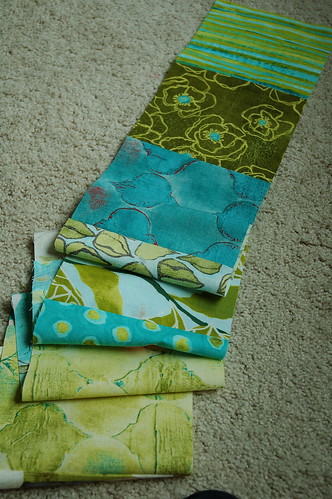
(This picture looks dark because there isn't sun in July...)
This year the summer skirt bug was particularly virulent :) Not only did I have to have a skirt, it had to be a patchwork skirt (ie - a skirt that involved more cutting and sewing than I had ever done before). The monster is still not finished, but I thought I would take some notes here so that next time I want to sew a skirt (you know, in two or three years) I'll have some idea of what I did. This won't make sense unless you know the basics for sewing this kind of skirt, but there are plently of online tutorials that will tell you how better than I could...
My first decision was what size I wanted each square to be. I decided on larger squares (after sewing most of the blocks are 5.5 inches square) to suit my large print fabrics... and my desire not to sew a million tiny blocks together.
The skirt is sewn in tiers. What you see above is one of the tiers before I attached the first square to the last to form a ring. The mighty internet told me that to make a skirt like this I should start with my desired waist measurement and make each tier of the skirt 1.5 x longer.
I wanted the waist to be scrunched when worn, and I wanted this skirt to be suitable for maternity wear, so I measured a similar skirt I love and came up with a waist measurement of 50 inches. Um, yeah. This thing is huge. When I say epic, I mean it.
Then, using the measuring tape, I figured out how long I wanted the skirt to be. It was not an exact multiple of the square size I was using, so I made the top tier shorter.
I fiddled around with the numbers for increasing each tier. There was rounding. There was disbelief. There was a measuring tape. I came up with something that sounded big enough, but not too big. Not very technical but true. It is always a good idea to check your crafting math against reality. Otherwise you might end up with a skirt with a bottom circumference of 12 feet - and be surprised.
The most fun thing about this skirt was sewing all the squares into tiers. I knew I would make myself crazy if I tried to perfectly place each square based on its color relationship to the squares around it. So, I assigned each of my fabrics a number, then I had the random number generator at random.org generate a random sequence of the numbers 1-9. I did this 10 times. I just sat there with my blocks stacking them in the order dictated by the numbers.
The least fun part of this skirt was gathering each tier. Fortunately, the machine I am using has a special foot that makes it easier, but it is always hard to distribute the ruffles evenly. The best way seems to be to divide each tier equally into four parts. Then match pins of adjoining tiers and pin together. The larger tier is then scrunched up to fit around the smaller one. Pinning about every 1.5 inches will more or less keep things under control.
Actually sewing the tiers together is the sort of task that makes inexperienced (hormonal) sewers cry, so I just decided that I would do one or two a day and stop if anything when horribly wrong.
So now I'm to the point where I have tried on the skirt. It is full and swishy and wonderful. Now it needs elastic through the casing I made at the waist, a decent hem, and a lining. The lining was a surprise, but the layers of cotton gathered together make scratchy seams inside. So, there must be some way to add one...

